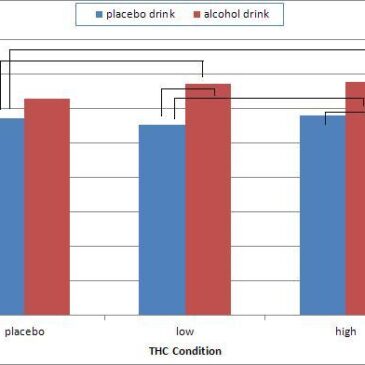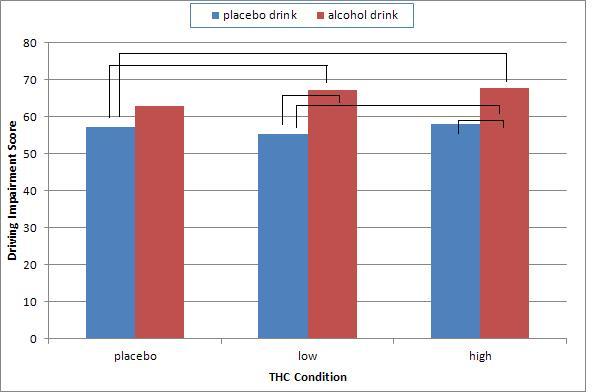An increased call for the legalization of marijuana has led some public health experts to consider a diversity of potential impacts. For instance, in the United States, the Office of National Drug Control Policy has established one of its goals as reducing drugged driving by 10% by 2015. Likewise, an international panel of researchers has developed guidelines for research on drugged driving. With alcohol intoxication continuing to create a public health threat, it is important to consider the potential effects of both substances on driving safety. This week, as part of our Special Series on Alcohol Awareness Month, we describe a study that examined the combined effects of alcohol and marijuana upon driving (Downey et al., 2013).
Method
- Downey and colleagues (2013) recruited 80 people (49 male) to participate in a study designed to identify the marijuana consumption upon simulated driving experiences, alone and in conjunction with legal driving alcohol blood levels.
- Approximately half of study participants were regular cannabis users and the rest were non-regular users.
- The researchers divided participants into 2 groups: low alcohol (i.e., 0.04% BAC) or high (0.06% BAC) alcohol.
- Within each of these two groups, participants completed six sessions that varied by the concentrations of alcohol (placebo or alcohol) and marijuana (placebo, low dose (1.8% THC), or high (3% THC) dose) they consumed.
- The study was a double-blind design, and the administration of the alcohol and marijuana was counter-balanced.
- During the study, researchers first gave participants a beverage and then provided participants with a placebo or marijuana cigarette.
- Researchers confirmed BAC and THC levels via breath and blood samples, respectively.
- Participants completed a daytime and nighttime driving simulation, which recorded overall driving impairment scores as well as speeds, distances, and 19 potential driving errors (e.g., collisions, inappropriate braking, lane violations).
- The researchers examined the effects of participants’ normal cannabis use (regular or non-regular use), alcohol concentration, and condition on driving.
- In this review, we report on a limited set of nighttime driving impairment results.
Results
- Overall nighttime driving impairment scores varied by condition but not by normal cannabis use or alcohol concentration. Figure 1 shows the pattern of means.
- Post hoc tests revealed that participants in the Low THC-Alcohol and High THC-Alcohol conditions showed significantly more driving impairment than those in the placebo-placebo condition.
- Those in the Low THC-Alcohol and High THC-Alcohol conditions were more impaired than those in the Low THC-Placebo condition .
- Finally, those in High THC-Alcohol condition were more impaired than those in High THC-Placebo condition.
- Most of the specific driving error comparisons showed no differences by condition.
Figure. Means of nighttime driving impairment scores according to THC condition and alcohol condition. When two bars are linked with black lines, this means that the means are significantly different from each other. Click image to enlarge.
Limitations
- The results did not correct for multiple comparisons, which leaves the possibility of Type I errors.
- The study included a relatively small number of participants, and its statistical power to detect significant effects is limited.
- The study only examined the impact of legal BAC levels. Therefore, the driving outcomes of those who drink more heavily and use marijuana are unknown.
- The study carefully controlled the experimental conditions and the driving simulation, therefore the external validity is limited.
Conclusion
Driving Under the Influence (DUI) of intoxicants is an ongoing public health issue that warrants attention. Although alcohol-related DUI has received much research attention, marijuana-related DUI research only recently has gained popularity. This research suggests that marijuana and alcohol, when combined together even at legal driving levels, can impair driving outcomes. More research will help determine the extent to which impaired marijuana/alcohol driving occurs and the possible real-world consequences of that behavior. Future public health efforts should consider the value of integrated intervention plans that address driving-related impacts of these substances together.
— Debi LaPlante
What do you think? Please use the comment link below to provide feedback on this article.
References
Downey, L. A., King, B., Papfotiou, K. Swann, P., Ogden, E., Boorman, M., & Stough, C. (2013). The effects of cannabis and alcohol on simulated driving: influences of dose and experience. Accident Analysis and Prevention, 50, 879-886.





